Kratky-style plants
Posted on Mon 22 May 2023 in plants
Overview
Over the past month I've started growing lettuce, chard, kale, dill and green onions in 1.9L mason jars hydroponically. I have been tracking the growth with 3 webcams taking photos every 1 minute.
Below, buttercrunch lettuce over 5 days (days 24 to 29). Plants grow slowly at first, but when they reach a certain size, they really get going!
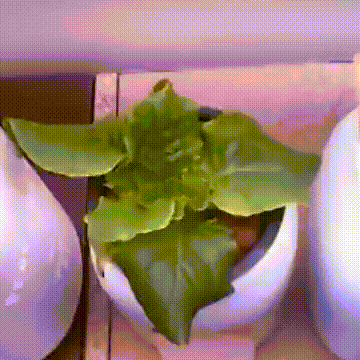
Below, two swiss chard plants over 8 days (days 16 to 24). Afterwards I split them each into their own container.
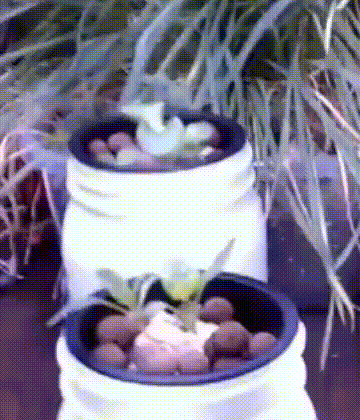
Below, the full setup with newer kale, onion and dill plants on the right.
Setup
Physical setup
I grow my plants on top of two bookcases, keeping everything out of the way (and out of the reach of cats).
- A structure make of 2x4 lumber with a melamine shelf as a kind of roof
- Mylar heat blanket with black garbage bags to keep light in
Seeds and nutrients
I've picked leafy green vegetables that are at least somewhat heat resistant. During the summer it's much hotter indoors. When the heat gets up above 25C, lettuce tends to flower and get really bitter. I'm hoping to avoid that during the summer but in winter my setup should be fine for all lettuce.
- Powdered nutrients, enough for 1500L of solution https://geckogrow.ca/shop/nutrients/3-part-masterblend-nutrient-kit-lettuce-formula/
- Buttercrunch lettuce, said to be heat resistant
- Kale "dwarf curled scotch", said to be heat resistant too
- Rainbow swiss chard, said to be even more heat resistant (none of mine came out rainbow...)
- Dill, good accompaniment in salads
- Green onions, good in EVERYTHING
Lights, containers, medium
The general idea of the Kratky method is that you let plants' roots draw from containers with nutrient solution. As long as the roots have some air, there should be no need to aerate the solution.
- 2 LED grow lights https://www.feit.com/collections/grow-fixtures/products/24-in-vertical-mount-adjustable-spectrum-led-grow-light-glp24adjs-vm-27w-led
- A standard relay timer
- 2 basic 5V 120mm fans for a bit of airflow
- 1.9L wide-mouth mason jars, painted to block light https://www.bernardin.ca/EN/Products/Jars/Regular-Mason-Jar/WM-Lid-19L/Product.aspx
- Hydraton clay pelets as a growing medium https://astralgrow.com/products/hydroton-expanded-clay-pebbles
- Generic 3 inch net pots https://www.amazon.ca/COSCANA-Nursery-Slotted-Plastic-Hydroponics/dp/B086SJFKZJ
- (Optional) an air pump to try aerating water https://www.amazon.ca/Marina-11112-75-Air-Pump/dp/B0048B1M1I
The Kratky method
You can read about it here: https://en.wikipedia.org/wiki/Kratky_method
It's a passive hydroponic method where plants' roots simply dangle in nutrient solution. There are no pumps, sprayers, or pipes.
Making containers
Take your large glass jars, put a strip of adhesive tape to see the water level later, and then paint the jars until they're opaque. It's important to block out light so that algae does not grow in your solution.
I use four layers of spraypaint, two black and two white. I figure that the black paint absorbs light that gets in, and the white paint reflects light that tries to get in.
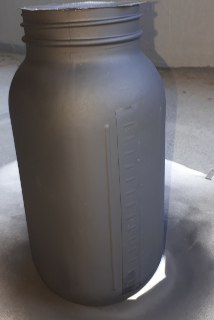
The little viewing window will show you how much water is left. Here you can see there is a little more than 1L left. Put a strip of aluminium paper over the window to make sure light doesn't get in! (light + solution = algae = bad)
Getting plants started
It is possible to germinate your seeds directly in the clay pellets if you use a few tricks.
I use a strip of paper towel as a wick of the nutrient solution. I fold the paper towel flat at the top to make a bed for the seeds to lay in. If you're growing bigger plants, make sure to leave 1-2cm of clay pellets over the seeds so that they can anchor themselves.
Below you can see the paper towel and the lettuce growing from it. For certain plants like chard, put the seeds deeper so that they can anchor themselves.
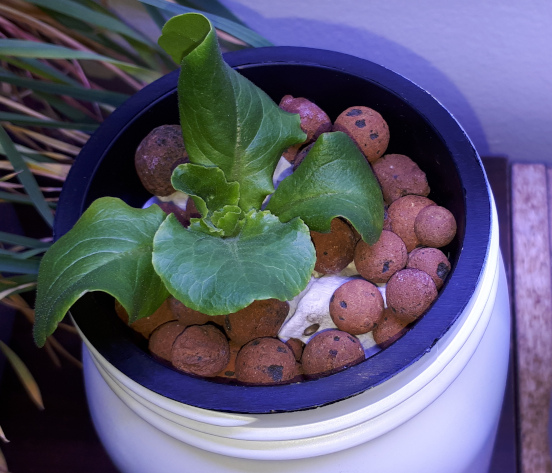
The paper towel is very effective at wicking solution! It only takes a few seconds for water to make its way to your seeds. It will then keep things hydrated. When the plants' roots reach the solution and they can get their own water, I get rid of the paper towel so that it doesn't cause mold.
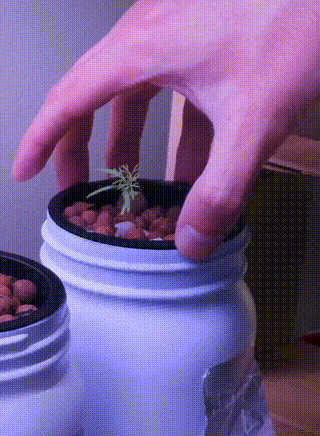
One final tip: it seems that some plants will stop growing without nutrients, so use a 50% strength solution to give them a bit of food.
Light
I have two adjustable LED light bars running 16 hours each day. Since I am only growing leafy greens, I disable the red lightp part of the spectrum. Red light is more for flowering and fruiting plants. This is not what you want to happen to lettuce (bolting). So bright blue light for me!
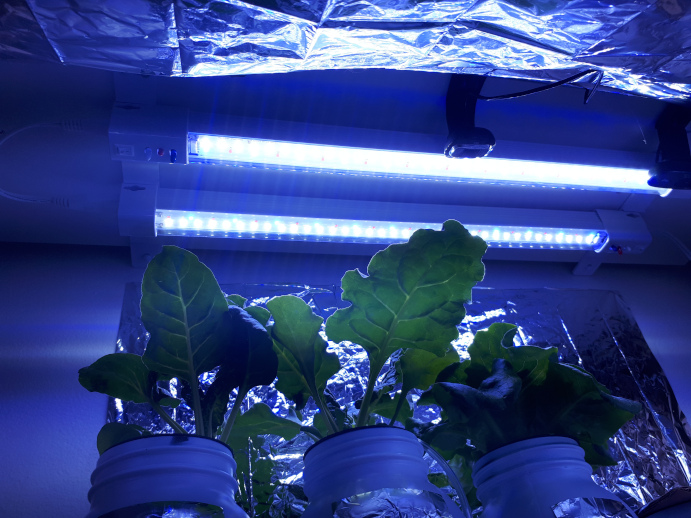
Optional: aeration
The Kratky method keeps containers partially full so that plants' roots get oxygen. If it's done well, the container is only filled once and the plant gets the ideal amount of air as it drains the solution.
Unfortunately for indoor growers, a typical lettuce plant will use up 5L of water during its lifetime. If you can't find containers that large or don't have much room.
In my experience, plants will get enough oxygen as long as you leave 2-3cm of air when topping up the solution. However if you want more oxygen, you can fit an airstone in the container. So far the chard with the air does grow faster. It does droop in the morning when the pump turns itself on. (I keep the pump off during the night to turn down the noise level.)
Below you can see what the drooping looks like. It doesn't last very long. The plant must get a bit of a shock when its solution starts bubbling.
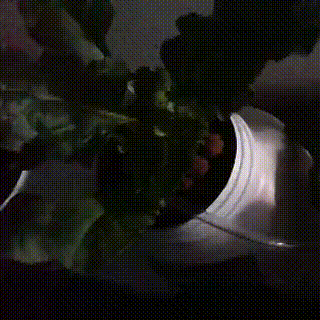
Next steps
I am just going to keep doing what I'm doing. I would love to grow tomatoes and peppers but there is not enough room in my setup. The lettuce I've eaten so far is very rich.
I can't wait for the green onions to be ready. I also wonder what kale tastes like. In the winter it should be safer to grow romaine lettuce and arugula.